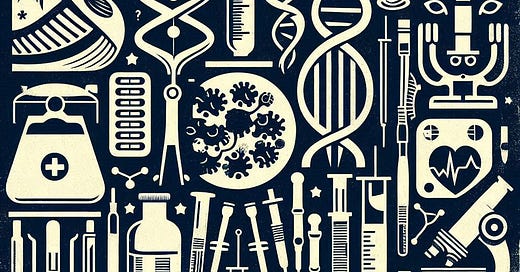Student articles: 3 Discoveries in Biology that were purely Accidental
The World of Scientific Research is all about experimentation. Researchers notice something unusual, derives a hypothesis, does experiments and in the best-case scenario gets results that affirms their hypothesis. But how would it feel like when your experiment leads you to a finding that is completely different from what you started with, changing the world and challenging the limits of science? Turns out such incidents are more common than you think it to be, and here we have 3 of such discoveries made in the field of biology that let's just say; did hit the bullseye but on a different target.
1) The first ever antibiotic: Penicillin
It was just a normal day in 1928 when Dr Alexander Fleming had returned to his lab after a holiday, only to find some Mould growing on his petri dish of Staphylococcus bacteria. However, one thing did seem to catch his eye; the Mould was preventing the bacteria from growing around it. He would then go on to find out that the Mould produced a chemical that prevented bacteria from growing,and named it penicillin. Although initially his peers showed little to no interest in purifying it, his efforts let Howard Florey and Ernst Chain extract and commercialize penicillin in 1937, going on to save millions of lives especially during World War II. Today we have an entire class of medicines called antibiotics, thanks to the contamination in Flemings Petri dish.
2) The zero-calorie wonder Saccharin
On a day in 1879, after returning home after working on coal tar derivatives in his lab, scientist Constantin Fahlberg noticed the piece of bread he was eating tasted exceptionally sweet. However, he quickly realized that it was not actually the food that was sweet, but his hands. So, he returned to the lab and tasted all of his beakers, glasses, and bowls until he determined which substance was the source – an oxidation of ortho-toluenesulfonamide that created benzoic sulfimide ,which he called saccharin, meaning “of or resembling sugar.” Being 200 to 700 times sweeter than sugar, saccharin was the first-ever sugar substitute and has been commonly used as a calorie-free beverage additive for decades. Though it was once banned in US for being a potential carcinogen, later studies found that humans metabolize saccharin differently from mice. It also opened doors to the possibility of making artificial sweeteners that people with strict diet restrictions can still use.
3) The Clot preventing Warfarin
Warfarin is an anticoagulant medicine used to treat blood clots and prevent them from forming. Despite being a revolution in modern medicine, the way the effects of warfarin were discovered wasn't quite fortunate for the dairy farmers. In 1920s, cattle started dropping dead from massive internal bleeding after getting minor surgical treatments. The reason was later found out to be Moldy sweet clover, hence the disease was named ‘sweet clover disease’. It was later discovered that spoiled sweet clover had the Prescence of some kind of anti-coagulant that was rendering the prothrombin in cattle blood non-functional. It remained a mystery until 1940, when Karl Paul Link and his laboratory of chemists working at the University of Wisconsin synthesized a chemical artificially in their lab which was identical to the naturally occurring agent, called Warfarin. Even though it was initially used as Rat Poison, its blood thinning effects were later put into utility in treating infarction from blood clots even on going to save the President of United States during that time, Dwight. D. Eisenhower, who had suffered a heart attack
What makes science more interesting is the uncertainty that comes along with it. Some experiments bear the desired results, some come out to be disappointments and, in this case, something completely out of the blue. But at the end of the day all of this only contributes to the betterment of science and society as a whole. Every single finding, whether big or small, makes an everlasting impact in our daily lives, irrespective of the fact if its noticeable or not. So, embrace this uncertainty and keep on seeking. One of the readers might end up taking a spot in this list a few years from now who knows?






